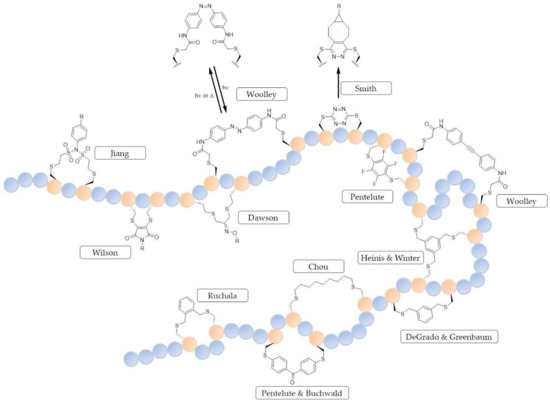

(2) Stapling techniques can be broadly categorised as one- or two-component reactions. Key learning points (1) A growing number of stapling techniques are being developed, each utilising different macrocyclisation chemistry. His research programme is focused on synthetic chemistry and chemical biology. He then worked as a Wellcome Trust Postdoctoral Fellow at Harvard University with Stuart Schreiber (1999–2001), after which he joined the faculty at the University of Cambridge. He received his DPhil (1998) at Oxford University under Sir Jack Baldwin. David Spring, studying double-click peptide stapling strategies.ĭavid Spring is currently a Professor at the University of Cambridge within the Chemistry Department. Yuteng moved to Cambridge to undertake his PhD in the group of Prof. During that time he undertook an industrial placement with GlaxoSmithKline. He received his MSci from Imperial College London in 2013 under the supervision of Prof. Yuteng Wu was born in China and grew up in Auckland, New Zealand. David Spring at the University of Cambridge (Department of Chemistry), where he has been working on new approaches to synthesise stabilised alpha-helix mimetic inhibitors for protein–protein interactions. Recently (2012–2014), he was funded by the Brazilian government (CNPq) to work as a postdoctoral research associate with Prof. From the same institution, he achieved his Masters (2008) and PhD (2012) in organic synthesis (carbohydrate chemistry) under the supervision of Prof.

David Spring.ĭr Peterson de Andrade obtained his degree as a pharmacist in 2005 at the School of Pharmaceutical Sciences – University of São Paulo. In 2010, he was awarded a Bragg Cambridge Australia scholarship to study at the University of Cambridge, where he is currently completing his PhD in chemical biology on new peptide stapling techniques with Prof. Yu Heng Lau obtained his BSc and MSc in organic chemistry at the University of Sydney, receiving first class Honours with the University Medal for research on azamacrocyclic sensors under the supervision of Dr Matthew H. In this tutorial review, we categorise and analyse key examples of peptide stapling in terms of their synthesis and applicability to biological systems. There is an expanding repertoire of stapling techniques based on different macrocyclisation chemistries. Stapling is carried out by covalently linking the side-chains of two amino acids, thereby forming a peptide macrocycle. Peptide stapling is a strategy for constraining short peptides typically in an alpha-helical conformation.


 0 kommentar(er)
0 kommentar(er)
